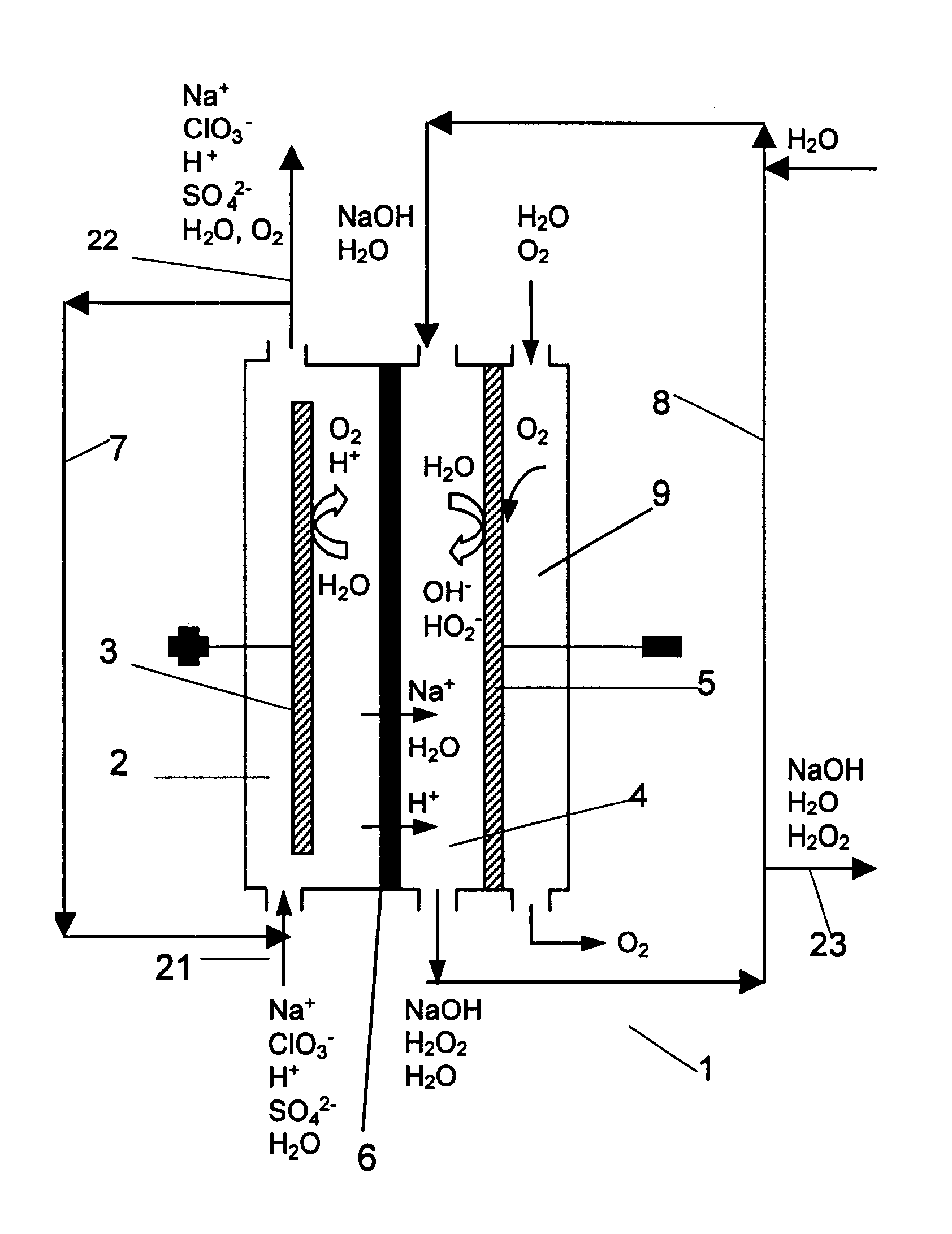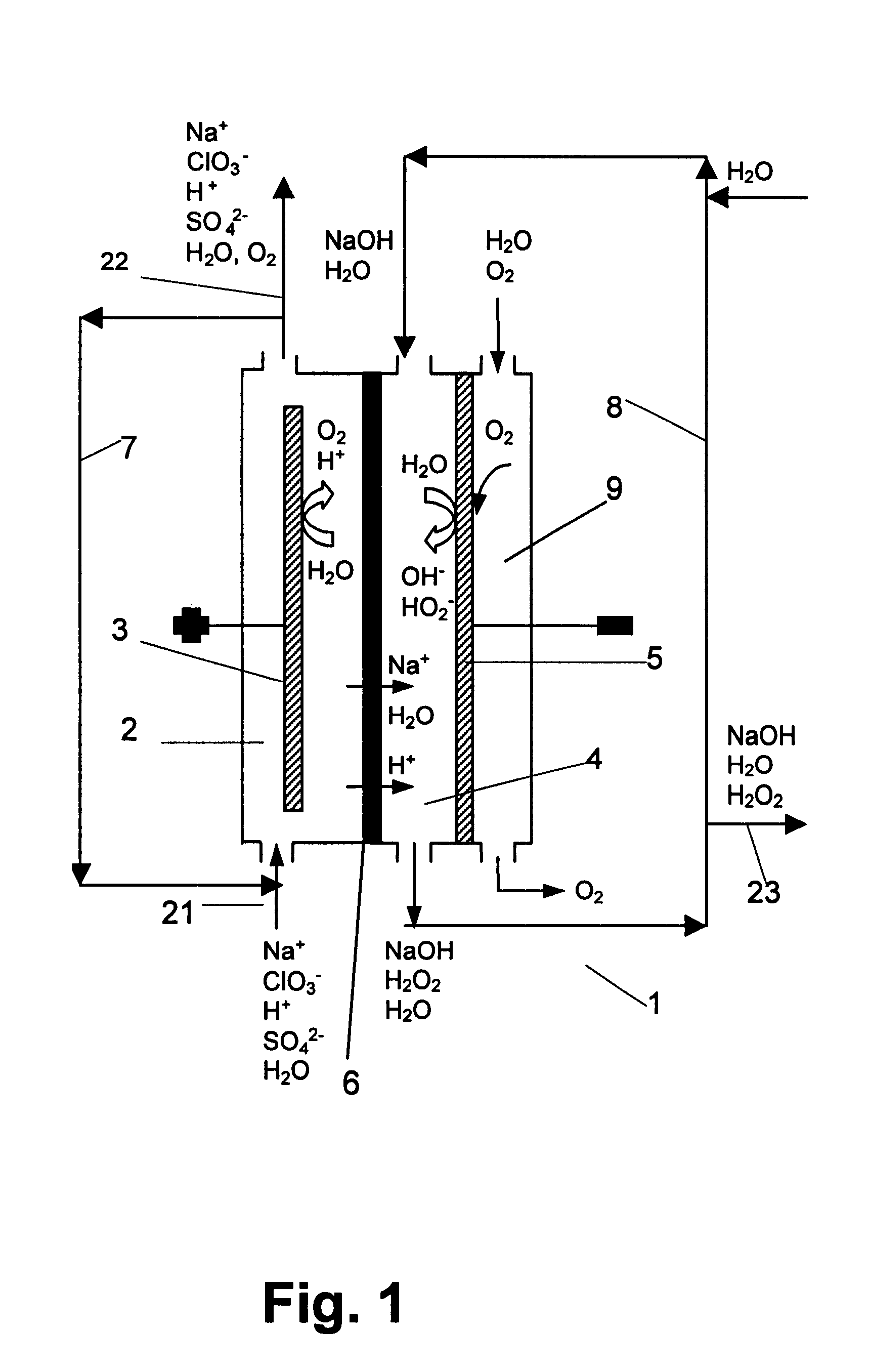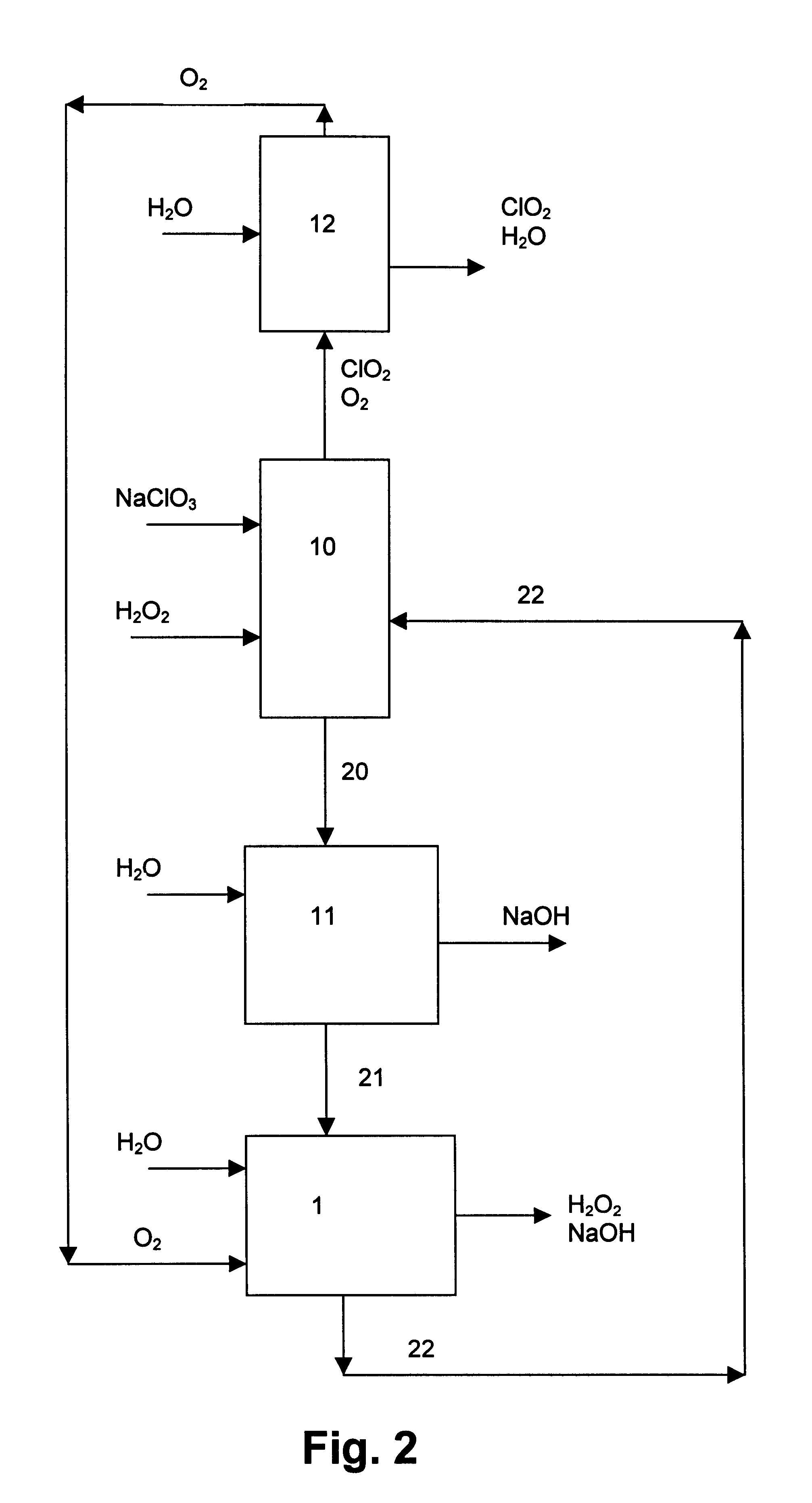Chemical method
a technology of alkali metal salt and electrochemical cell, which is applied in the direction of electrolysis components, chemistry apparatus and processes, halogen oxide/oxyacids, etc., can solve the problems of high investment, inability to meet small-scale on-site production, and inability to disclose flexible processes in documents, so as to avoid the net production of sulphate by-products and sodium hydroxide production
- Summary
- Abstract
- Description
- Claims
- Application Information
AI Technical Summary
Benefits of technology
Problems solved by technology
Method used
Image
Examples
Embodiment Construction
Chloric acid and alkaline hydrogen peroxide were simultaneously produced in a two compartment laboratory cell provided with a Ti / DSA.TM. anode (240 cm.sup.2), an oxygen reducing graphite felt cathode (240 cm.sup.2 superficial, 10.sup.4 cm.sup.2 real) and a Nafion.TM. 450 cation-exchange membrane. An aqueous solution of sodium chlorate and chloric acid was fed to the anode compartment, while an aqueous solution of sodium hydroxide and oxygen was fed to the cathode compartment. At the anolyte outlet the temperature was about 35-40.degree. C. and the pressure about 240-500 kPa. At the catholyte outlet the temperature was about 40-44.degree. C. and the pressure about 101-450 kPa. For practical reasons, the cell was operated with a single pass of catholyte, while the anolyte leaving the cell was recirculated and partly neutralised with sodium hydroxide before entering the anode compartment again. Samples of anolyte and catholyte were taken at the respective outlets and analysed, and the ...
PUM
 Login to View More
Login to View More Abstract
Description
Claims
Application Information
 Login to View More
Login to View More - R&D
- Intellectual Property
- Life Sciences
- Materials
- Tech Scout
- Unparalleled Data Quality
- Higher Quality Content
- 60% Fewer Hallucinations
Browse by: Latest US Patents, China's latest patents, Technical Efficacy Thesaurus, Application Domain, Technology Topic, Popular Technical Reports.
© 2025 PatSnap. All rights reserved.Legal|Privacy policy|Modern Slavery Act Transparency Statement|Sitemap|About US| Contact US: help@patsnap.com



